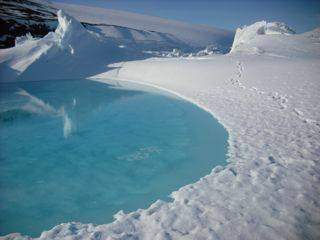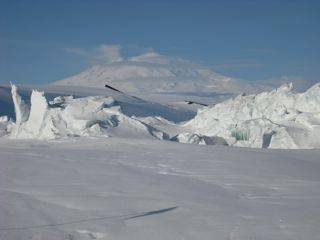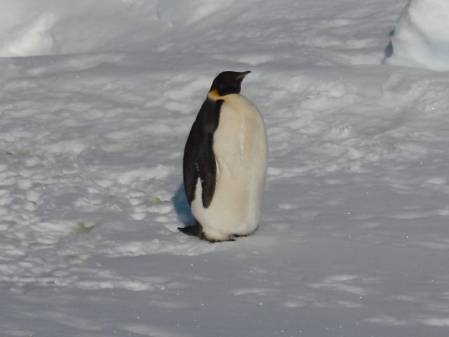Two-days ago we went for walk to the pressure ridges in the evening. The pressure ridges are forming where the ice shelf and sea ice are being pressed together at the shores of Ross Island. Last year the sea ice broke out and therefore the ice is still relatively thin and many large bright blue meltwater ponds have formed.
Meltwater pond in the pressure ridges
Mt. Erebus is an active volcano that is ca. 3,700 metres high and is about 64 km away from Scott Base. Usually you can see little bit of smoke appearing from the top of the crater.
Pressure ridges and Mount Erebus
Every year a few Adelie and Emperor penguins can been seen near Scott Base. At the moment, there is a lone Emperor penguin wandering through the pressure ridges. The penguins come from parts of Ross Island where the sea ice breaks out every summer. The Emperor colonies on Ross Island are quite far away and nobody really knows if these individual penguins will be able to get back to the colonies. Let's hope for the best!
Emperor penguin





